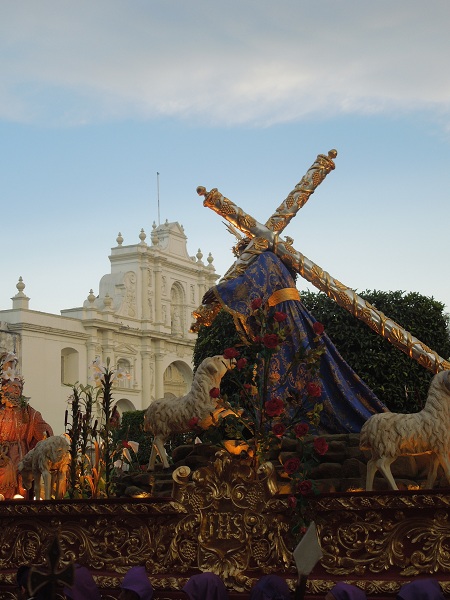

From 2013:
Driving to Antigua from the airport, our cab driver told Olivia and me that the most spectacular Semana Santa carpets could be seen on a street on Antigua’s north end called Calle Ancha. The earlier we arrived on Good Friday morning, he said, the better: teams of artists would have started construction midnight on Holy Thursday. Five AM was the hour he recommended because the procession started at La Merced Church at 5 and would arrive on Calle Ancha by 7. To see the rugs intact, we needed to get there on time. As I explained in an earlier blog post, an essential element of constructing the carpets—for the artist and viewer—is watching them be destroyed by the feet of hundreds of pilgrims walking over them as they carry the procession platforms.
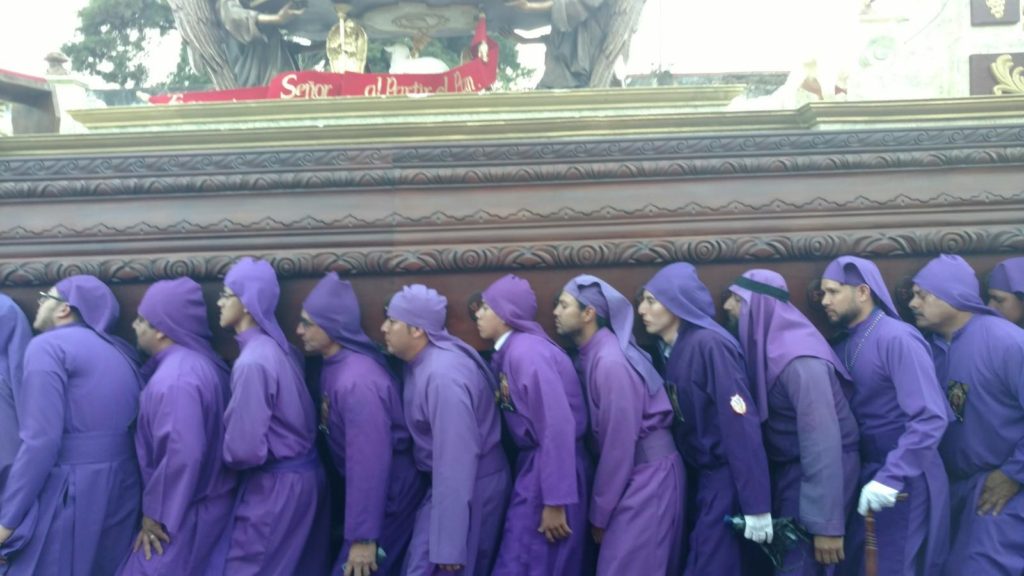

Olivia and I were staying in a hotel where, coincidentally, a group of adoptive families from the U.S. were also booked. Another mom and I slipped out of our rooms as our daughters slept and headed north by 5:30. After a few false turns and a run back to my room for my camera–which in my pre-coffee haze I had forgotten–we found Calle Ancha. Magnificent. Unforgettable. Worth every effort.
What I hadn’t expected was the tone of the day, and every day during Semana Santa, really. “Reverent, solemn, prayerful” are the most accurate descriptors. “Awe-inspiring, painterly, unexpected” are a close second. And the music. Dirge-like drums and mournful trumpets playing Chopin’s classic “Funeral March.” So moody and emotional.

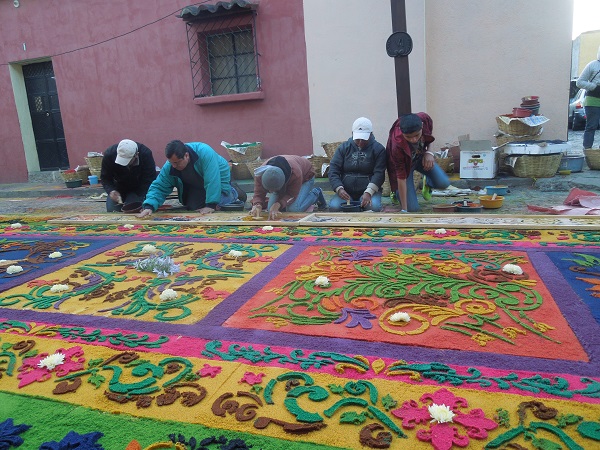



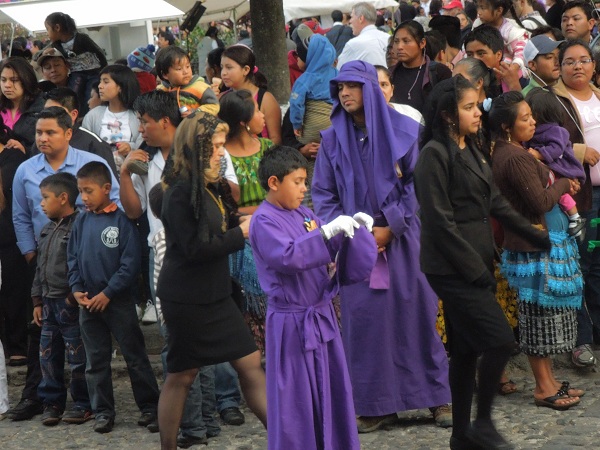
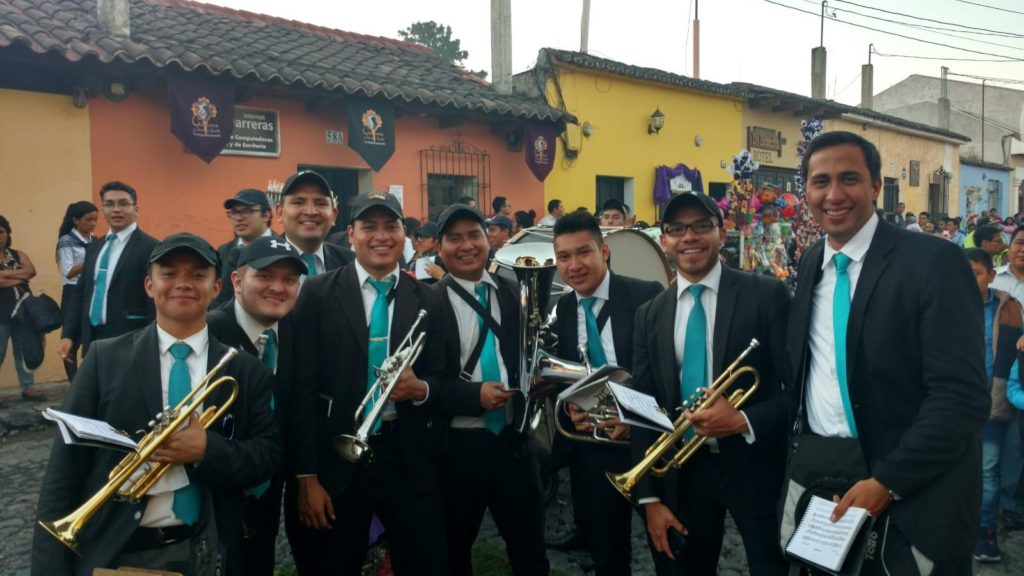

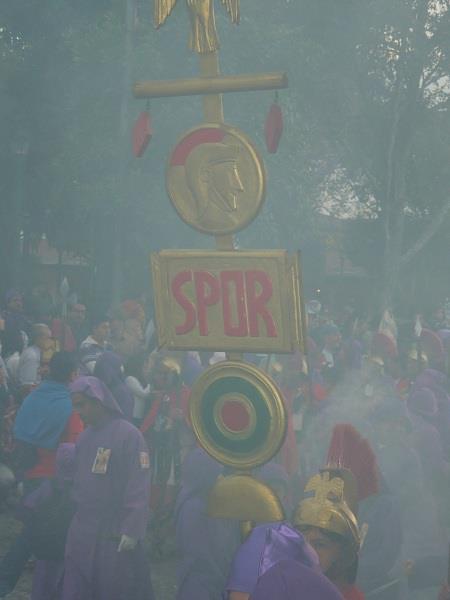
In the United States, Easter Sunday–celebrating the resurrection of Christ–is considered the most sacred day of Holy Week. It’s different in Guatemala. In Guatemala, Good Friday—Christ’s crucifixion, suffering, and death–is most devoutly observed. A friend of mine who is a Catholic nun in-country describes Guatemalans as “Good Friday Catholics” and Catholics in the U.S. as “Easter Sunday Catholics.” Having witnessed my first Semana Santa, I understand.
